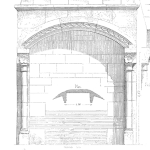
Some time ago when talking with someone I just met, the conversation turned to what we did for a living. I mentioned being a reliability engineer, and his response: “Oh, yes, we do reliability”. Curious, as I’m not sure that I ‘do reliability’, we then talked about what he meant.
The conversation revealed that they had a list of tasks that they accomplished for each product under development. They did tests and reviews of the results. A lot of testing. They did FMEA and HALT. He believed the engineers did derating or stress/strength calculation. He didn’t know about process stability with vendors or internal manufacturing lines.
They did stuff, which meant they did reliability.
Why do we want to do reliability?
To answer this question, consider the desire to enjoy the benefits of an item. I like it when my car starts and works as expected while I run errands in town. I can count on it to make the trip without incident. I trust my car.
For many customers, the definition of reliability revolves around this concept of trust. The item will just work.
When an item doesn’t work, meaning it fails, the customer may pursue various means to remedy this failure and again enjoy the value of using the item. The customer may call the manufacturer for support or replacement, find a repair shop, or toss the item and buy another one. All of these options, and others, take an extra effort to restore trust. If failure happens enough times or to enough people, this trust is broken and that hampers market growth, profits, etc.
As a business offering widgets to the market we care about the ability of those items to work for the customer as expected. It should just work. When the items fail it causes annoyance to frustration for customers and costs our business time and money. Thus, we care about reliability.
Who does the reliability work?
The short answer is anyone making decisions concerning the creation and manufacturing of a product. This also includes decisions concerning shipping, installation, and use. The customer is part of this doing reliability, as they decide when, where, and how often to use product and judge if the items is working or have failed to meet their expectations.
The reliability performance of an individual product, and the entire population of such products, occurs independently of any one person or group ‘doing reliability’ tasks. The eventual performance of a product depends largely on how well the design creates robustness to all stresses, plus how well the design accommodates customer expectation around ‘it just works’.
Decisions within an organization on funding a project, on setting expectations via marketing, on investigations to improve process stability, on types of shipping strategies, and so on all impact the eventual reliability of a product.
Notice that reliability engineers and managers are not on the above list. They may or may not be individuals in your organization with such a title. Yet, even if someone is a reliability engineering, they alone are unable to make all the decisions that result in the eventual reliability performance that occurs.
Reliability engineers and managers can assist others across the organization to make informed decisions concerning reliability. They can enable information availability and processes that make decision making easier to incorporate reliability impact.
What would doing reliability well entail?
To do reliability well within an organization would include all across the organization being able to ask and answer questions that examine and balance various priorities with the inclusion of reliability performance. In short, having the right information at the right time allows each decision to result in the best outcome for all concerned.
This includes a clear reliability vision and sets of goals. Accurate and meaningful analysis of field reliability performance. Insightful analysis of all failures to root cause. Policies that align with company values, objectives, and customer expectations. Design analysis and product testing that create actionable outcomes by those that would most benefit by knowing the information.
‘Doing reliability’ is not accomplishing a set of tasks and tests. It is much more than that and done by the reliability engineer. If your organization ‘does reliability’ is it clear how the set of all activities connect to the decisions that actually result in the reliability performance is good, or not so good?
Leave a Reply